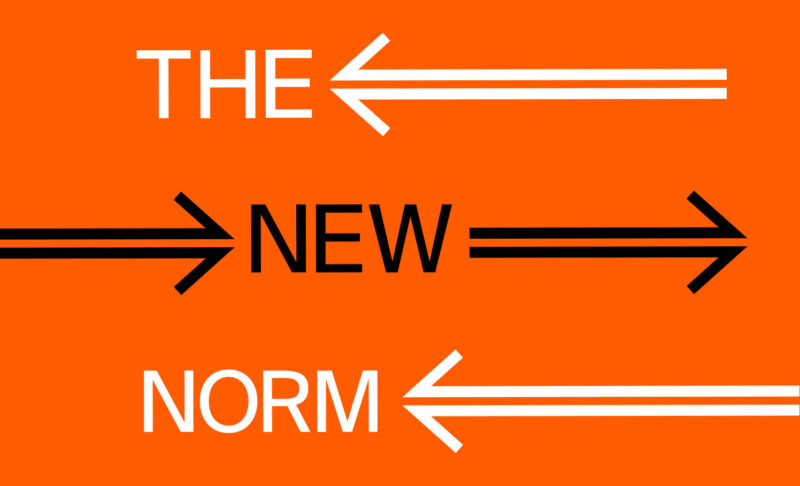Selling In The New Normal: Branding Strategies For Digital Retail
Related Services
Credits
Writer: Dejan Kvrgic

The COVID-19 pandemic changed the marketer’s playbook, putting the “rules” of branding and customer relationships to the ultimate test.
The retail sector has been facing some of its biggest challenges to date. It seems that selling in the new normal pushes retailers and brands to move even closer to an all-digital model. There was a sense that we were slowly – but surely – moving forward. But have we written an entirely new future for our society during the months of lockdowns and self-isolation? That’s the discussion we’ll be having today: Now, with two years in, it’s becoming evident that going back to the old normal is no longer an option. Given the fundamental shift in consumer behavior, brands will have to think long and hard – and differently, might we add – about how they should approach their retail branding strategies in the new normal.
Challenges/Opportunities For Retailers In The Face Of A Global Pandemic
Consumer behaviors and purchase patterns have changed drastically – with digital playing a big role in the consumer’s life and the retail sector. And “phygital” seems to be the latest buzzword in the game – pointing to a blend that encompasses physical and digital customer experiences. “Go digital or die” was a major theme in 2020 and 2021, with retailers facing challenges as they tried to adapt to the “new normal.” But at the same time, these disruptions made room for major transformations – changes that will stick around long after the pandemic subsides.
Driving Brand Loyalty
Yes, growing your audience should always be a top priority. However, many digital brands seem to struggle with being too focused on luring in customers; they are taught to zero in on first-time buyers – forgetting about their existing customers along the way. Don’t make that mistake. Making your existing customers feel valued and like they’re a part of your brand’s “family” and showing empathy will earn you their support. And once the customer bonds with your brand, they’ll be more likely to make repeat purchases – with little to no forethought – which would ultimately bridge the gap between trust and loyalty.
Strengthening Customer Relations
Positive customer experiences and overall brand perceptions mean positive brand equity – and that means higher perceived value, greater social impact, and the ability to grow when the time is right. And how do you create these positive associations during challenging times like these? Through customer relations: For starters, be a person, not a brand. Find efficient ways to communicate – and form emotional connections with your customers. Furthermore, try to align your brand’s values with your target demographic; get to know your audience and what matters to them, and build from there.
Pivoting When The Timing Is Ripe
If there’s one thing many businesses learned as the COVID-19 pandemic took over the world, it was that their products or services – or, at the very least, their modus operandi – were no longer meeting the needs of the market. That could be viewed both as a challenge and an opportunity. On the one hand, it meant struggling to survive on the market. But on the other, it gave them an opportunity to fundamentally change the direction of their brand – and for the better.
Innovating A Better Customer Experience
By now, you should be aware of how much the customer experience has changed during the pandemic. How you interact, what you offer, how you approach safety – everything’s changed. It seems that customers have much higher expectations of customer service and the retail sector in general than ever before. For brands, that meant going digital, offering around-the-clock customer service, and providing an experience that comes from a place of empathy and human connections. At the very core, your brand is about helping people – and addressing universal values and elevating the human experience will create lasting transformational relationships.
Building A Transparent Brand
Bear in mind that the experiences you offer – online and offline – also define how your customers perceive your brand. And given that safety continues to be one of the primary concerns in these uncertain times, it’s more important than ever for digital brands to prioritize authenticity and be transparent with their customers. At times like these, credibility and transparency might just outweigh clever marketing strategies.
Examples Of Retailers With Great Branding
Some believed that the global pandemic spelled “doom” for offline retail as we know it. Instead, we could see that the major retail players were quick to adapt, ramping up experiences and, in turn, enabling the sector’s recovery and revival. One great example of a brand that listened to its customers and took note of what they’re going through is Nike: Realizing that lockdowns meant spending time – and working out – at home, Nike made sure to promote the importance of physical and mental well-being when its target demographic needed it the most. Amazon continued to be a juggernaut throughout the pandemic – but that’s to be expected from this massive online retailer. Nonetheless, it’s a fantastic example of a brand that gained a boost during lockdowns. Another example of an outperformer that experienced huge retail success during the pandemic and met this unprecedented moment prepared is Ikea. The #I’mStayingHome campaign served as a reminder for people to view their homes in a new light – as the stable world that they have created and can turn to in this time of uncertainty. Retailers that managed to cater to people’s needs thrived – especially those that already had a strong digital footprint.
(Re)Defining The Digital Strength Of Your Brand
It’s safe to conclude that these past couple of years were like no other. And as we are close to the end of 2022, it’s time to realize that there’s no reverting to the “old” normal. So, as digital brands move on and think about their strategies, what should they take away from the pandemic? What can they do to boost growth and establish a solid digital brand? How was branding in retailing redefined in the COVID-19 age? Answering these questions will be critical for success in the months – and years – ahead. With that said, let’s go over the following tips on how to build a strong digital brand together.
Position To A Strong Message
First and foremost, take the time to polish and perfect your brand’s message – because that will allow your brand to maintain a competitive edge over your competitors. You’re going against so many other digital brands; it’s crucial to encourage customers to connect with your purpose and give them a reason to do so. And that’s what a solid brand message can do for your digital brand – it positions you in the mind of the customer and, in turn, in your niche.
Reinforce With Great Design
No matter how powerful your brand’s message might be, you can’t afford to overlook the role of your website and logo design. Needless to say, the two should complement each other, working together to deliver a consistent, uniform experience. So, go beyond the narrative – or, rather, reinforce it with your brand’s visual elements.
Create Consistent Customer Experiences
Your products will come and go – but the experiences you provide to your customers are forever. That’s why you want to make sure they’re remarkable. The key term here is consistency. Consistent engagement between your brand and your audiences that are both memorable and meaningful builds rapport and recognition and breeds trust. In short, it will do wonders for your digital brand. And remember: You’re going against the last best experience your customer had here.
Show Up In Meaningful Ways
Everyone wants to feel appreciated – and yes, that includes your customers, too. If you’re in a position to solve your customer’s problems – as you should be – or give back to the community, do it. Show up for your customers – and show them you care. But in order to do this, you have to understand why your customers need you first. So, consider what your unique value proposition is and how it aligns with your customer’s expectations. Most importantly, only promise what you can realistically deliver – and keep those promises.
Scale Up Your Efforts
So far, you’ve been working on who you are as a brand and what you represent. We’ll assume that you’ve already done the preliminary work and target audience research – and now it’s time to kick things up a notch and scale up your efforts. Unfortunately, there aren’t any fast, clear-cut routes to successful scaling. If there were, we’d all be running million-dollar companies here. One thing’s certain, though – you’ll need to approach it strategically. The great news is that digital platforms allow you to dive into the data, pinpoint what works and what doesn’t, and adjust your efforts accordingly.
Conclusion
Would it be fair to conclude that the COVID-19 pandemic was the biggest catalyst for the digital transformation we’ve seen in decades? It seems so. So, as you move even closer to an all-digital model and think about branding during this year – and in the future – it’s crucial to remember the importance of delivering first-class experiences and approaching your customers from a place of empathy, putting human connections first. If you need help surviving, recovering, and thriving in the “new normal,” don’t hesitate to reach out to our team!


